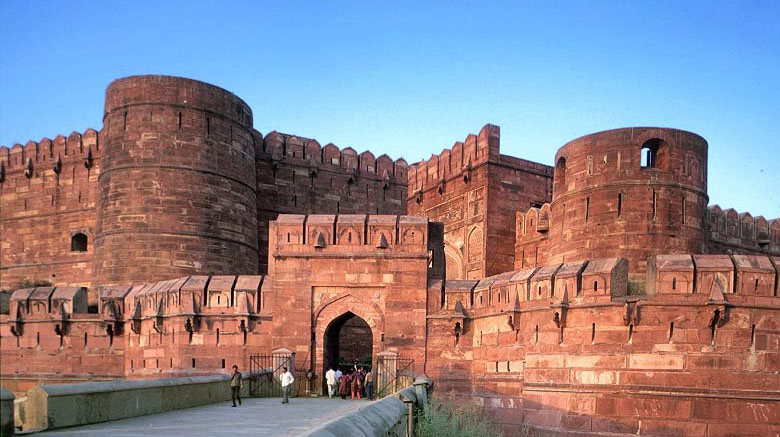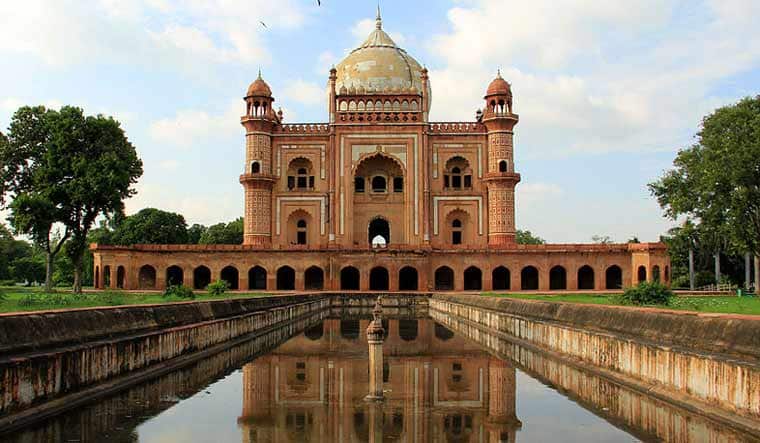Although it is well recognized that the Mughals are largely responsible for Delhi's cultural splendor and grandeur, few people are familiar with Mughal architecture. Indeed, one in four Delhi residents has never even been to any of these architectural wonders.
Indian history saw a sea change with the advent of the Mughals, particularly in terms of architecture. All of the early Mughal emperors built magnificent mausoleums, mosques, forts, gardens, and towns, all heavily influenced by Persian architectural forms. The structure and features of the Mughal buildings follow a consistent pattern. The enormous domes, slender minarets with cupolas at four corners, expansive halls, lattice work, enormous arched doorways, and exquisite ornamentation are the primary characteristics of Mughal architecture.
Humayun’s Tomb
The first monument on this list is Humayun's Tomb, which was constructed by Haji Begum in honor of her devoted husband, Humayun. UNESCO has listed it as a World Heritage monument. It is the first garden tomb constructed in the Indian subcontinent. The Taj Mahal is said to have been inspired by this original work of art, which was created in red sandstone. The monument and the love tale that goes with it are, however, less well-known than the one they inspired.
Red Fort

You just cannot miss this one if you are interested in history. This fortified palace, constructed by Shah Jahan, embodies the grandeur of the Mughal court, while not being as well-maintained as the Agra Fort. Among its notable buildings are Diwani-i-Aam and Diwani-i-Khas, Rang Mahal, Khas Mahal, Hamam, Delhi Gate, Lahori Gate, Moti Masjid, Naubat Khana, Hira Mahal, and Shahi Burj. It blends Islamic architectural elements with Timurid, Persian, and Hindu styles.
Purana Quila

As the name implies, Purana Quila, which was constructed on the site of Delhi's oldest city, Indraprastha, stands firmly against the whims of time and the elements. This might be a great spot to spend a winter afternoon, enjoying the sun and discovering three enormous entrances. There is also a boating moat around the fort.
Jama Masjid

With a courtyard that can accommodate 25,000 worshippers and many pigeons, this historic masjid takes you one step closer to the divine. The mosque, which was put into service by Shah Jahan, was the product of the labor of over 6000 workers over six years.
Safdarjung Tomb

This colossal burial garden is the final legacy of Mughal architecture. This enclosed tomb was constructed in honor of Safdarjung, who served as Avadh's minister under Muhammad Shah. Even though it looks similar to Humayun's Tomb, it is substantially smaller. Jangli Mahal, Badshah Pasand, Moti Mahal, and other intriguing constructions form part of this monument.
Chandni Chowk
Shah Jahan had Princess Jahanara design Chandni Chowk, often known as the moonlight market. This heavily populated area, which was once crisscrossed by canals, is still one of India's biggest wholesale markets. Check out the ancient havelis of Ghalib, Begum Samru, and Chunnamal when you visit this location.
Zafar Mahal
The Zafar Mahal is the final monument built by the Mughals. Emperor Akbar II named this Mahal after his son, Bahadur Shah Zafar. It is located in the center of Mehrauli, next to the western gate of Khawaja Bakhtiyar Kaki's dargah. Today, a large portion of this summer mansion lies in ruin. However, the Moti Majid, a white marble structure, still retains traces of the past.
Fatehpuri Masjid
Built by Shah Jahan's wife, Fatehpuri Begum, in the 17th century, the mosque is situated on Chandni Chowk. The mosque, which features a prayer hall and a fluted dome on top, was constructed using red sandstone. It is surrounded by apartments of one or two storeys.
Tomb of Atgah Khan
This charming little mausoleum was constructed for a nobleman who was killed by a competitor in Akbar's court. Many people are still unaware of this 16th-century monument in Hazrat Nizamuddin Basti. Unfortunately, not much has been done to keep it looking beautiful.
Khan – i – Khana’s Tomb
Bairam Khan's son, Abdul Rahim Khan-i-Khana, was a Navratna in Akbar's court. This mausoleum in Nizamuddin was originally intended for his wife, but he was ultimately laid to rest there as well. A tree-lined paved driveway leads to this aged tomb, which is emphasized with a chattris and a dome. Ironically, the marble used for this monument was later removed from the tomb of Safdarjung.

Comments
All Comments (0)
Join the conversation